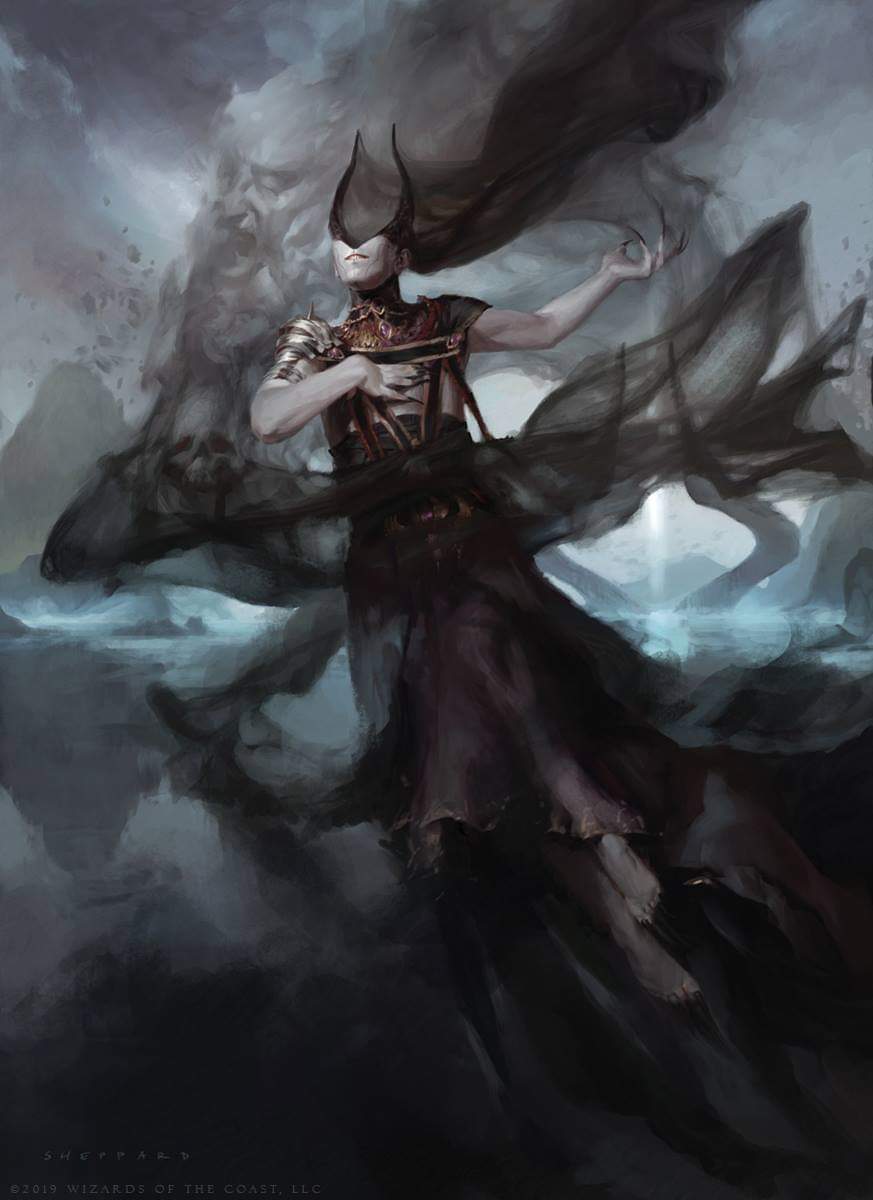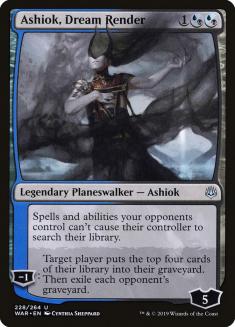Hello everyone, and welcome to this week’s installment of Sullivan’s Satchel. Since most of the Magic-playing world is locked under stay-at-home orders, now is a good time to catch up on reading, music, and of course television. I rarely recommend things too strongly in these mediums, as people have different tastes and all that, but I believe you are doing yourself a disservice by ignoring Tiger King, the Netflix documentary that has taken my various social feeds by storm. Usually I think these kinds of shows that transcend into some sort of “cultural moment” are really overblown, in part because it’s fun to share in the experience, but not this time, for reasons that will hopefully become more obvious as we dig into this mailbag.
As always, [email protected] for your questions, DMs @basicmountain for typo-riddled challenges to a fight because you didn’t like my last tweet. With that:
From Cedric P:
Hey, all you cool cats and kittens (and Patrick).
I’d ask you this question live on air if I could, but because the SCG Tour is on an indefinite hiatus, there’s no better place to take it than the Satchel.
Do you think Carole Baskin fed her husband to a tiger?
PS: Do not free Joe Exotic
Cedric is, of course, referring to Carole Baskin from Tiger King, one character from the show (among many) who toggle from protagonist to antagonist and back again depending on the specific events in question and your personal disposition towards the people on the show.
Without spoiling too much, this is the key element that I find brilliant about the show. There are no “heroes” and “villains” in a conventional sense, and not in that cheap Marvel Punisher “good guy but does some violent stuff sometimes” kind of way. The characters exist more as avatars of base emotions than as fully formed individuals in any traditional sense, and so getting mad at their shortcomings is like getting mad at an act of nature. Unequivocal condemnation is elusive (at least it was for me), but in the arts that experience usually emerges from the depth and complexity of the characters. Here, quite the opposite: they are too simple and shallow to expect anything more from.
I believe the show is especially compelling for fans of competitive Magic because it is a funhouse mirror reflection of our own passion: all-consuming, filled to the brim with people with the same desires as your own, impossible to explain to anyone not fully immersed in the culture, an entirely different set of norms and behavioral expectations from society at large, and so on. Point and laugh all you want, but be aware that the average person, maybe even your close, non-Magic playing friends, see Tiger King and any Walking the Planes documentary as functionally indistinguishable.
To answer the original question, and without spoiling too much – it is really rare for anyone, and especially someone worth eight figures, to suddenly disappear without any trace or communication. There is motive, a paper trail of concerns of violence, and Carole evinces a weird detachment when discussing the purported events surrounding her ex-husband’s disappearance. I’m not saying she fed him to a tiger, but I’m also not saying that she definitely didn’t feed him to a tiger, either.
From Rahul Guha:
What do you think of a player trying to break into competitive/higher competitive level play taking a “Tom Ross” approach to archetype specialization vs a Andrew ‘Play the Best Deck’ Jessup approach? Granted, neither one is always best or always worst. But, what are the things someone should keep in mind as they look at costs of buying into the best deck vs. becoming a well rounded player.
I think most players toggle somewhere in between those extremes, having a preference or a disposition but some willingness to bend with however the winds blow. I think the answer depends in large part on the level of competition in question: if you’re the best player at your FNM, or among the best, and you don’t have any aspirations about getting better, you should probably just play “the best deck.” The delta in the quality of your deck versus your average opponent, and then again multiplied by you playing more competently than your opponent, will be too much for weaker players to overcome.
If you’re a player going to your first SCG Open, you probably won’t do well regardless, and that isn’t an insult – about 15% of the room makes Day 2, and it’s hard to finish in the top 15% of a competition, and we aren’t even talking about Top 8. Players at events like this will at least know what the best decks are, even if they aren’t playing them, and to do well you will most likely have to play against a number of players better than yourself, playing the best deck. If you are playing the same deck yourself, where is your edge coming from?
Many of the SCG Tour’s top players play “the best deck” in many events because they’re good enough to leverage an advantage in the mirror, even against other reasonable players. If you aren’t that good but want to give yourself a chance to spike a big event, I support getting in reps with something good but less prevalent, and something that fits your strengths as a player. As an anecdote, I recall vastly more Top 8s for “players who maybe aren’t that great in absolute terms but know their deck very well” than “50th percentile jabroni playing stock build of best deck,” which further cements my position here.
That doesn’t mean just do whatever – you need to do your work, and you definitely need a good plan for the decks you’re anticipating. But for competitive players trying to take a next step, I generally recommend trying something unorthodox.
From Andrew Upton:
Patrick,
With the recent uptick in cards like boil and choke seeing some appearances in sideboards to combat mystic sanctuary decks. Do you think these cards have reasonable application versus Amulet Titan with their addition of Dyrad?
It makes for good screenshots, but I’m generally skeptical of this approach. First, the window you have to execute this sort of plan is very tight – it’s often one or two turns to go from “Dryad is on the battlefield” to “Their position is unassailable,” “they have some way to get their Dryad off the table,” “they have Pact of Negation back,” or whatever calamity is in store. The cards you mentioned are not cheap, and so you have to make all your land drops and hope they don’t just accelerate way past you anyway. Lastly, the deck wins a lot of games without ever deploying Dryad, and can usually work around a Jund player who just keeps suspiciously leaving open four mana. If you think your matchup is rancid against them and you want Choke or Boil for other decks, I’m fine trying to throw that punch, but if you think the matchup is within the margins I’d probably stay away.
The type of approach I do like is something that adheres to your fundamental plan but has the chance to spike really hard sometimes. Sundering Titan in Mono-Green Tron is the type of thing I’m talking about.
From Evan Kerr:
Hi Patrick,
My question is regarding the design aspect of a WAR walker, Ashiok Dream Render. I want to know if you think this card is pushed too far or not?
My own logic follows the line that the card sneaked past most peoples radars and has shown itself to be too good in a sense. Part of its stealth comes from much more obviously broken and pushed cards coming from the same set, see Teferi, Karn, Narset. The most problematic issue with it arises in how much it does as a hate piece and how hard that hate piece is to interact with. It stops many game functions, reduces future resources (that probably is a bit of salt from my time in limited), and is difficult to interact with given its planeswalker nature so common sideboard removal is not geared towards it.
For me, a big thing when designing sideboard or “hate” cards is “how much charity do we feel towards the victim?” Part of this is a function of play pattern, how easy it is to interact with at a baseline, how satisfying are the games that it produces, how much fun does the total experience promote, a lot of different things.
As an older example, Island Sanctuary scores very poorly here. It hates on a class of cards (creatures that attack) about as hard as possible (in many cases, the act of casting it and paying for its upkeep would cause an opponent to deck), and it doesn’t produce satisfying games (it’s an all-or-nothing proposition, either a total lock or a blank, barring weird synergies.)
Wizards of the Coast (WotC) regularly produces anti-graveyard cards that are considerably more powerful than their anti-creature cards, and it follows those heuristics. The graveyard decks historically don’t give opportunities for meaningful or satisfying interaction at a baseline, they aren’t the most intuitive experience, and so if they are showing up in people’s sideboards, it’s probably producing net-happiness across the player base.
Ashiok, Dream Render is hostile towards decks that tutor a bunch, leverage their graveyard, or both, and especially hostile to those decks that either can’t attack a planeswalker down or otherwise play with interaction. That class of decks is about the least deserving of charity as any I can imagine, and so I generally support designs of Ashiok’s power level against that style of deck. I similarly like Narset, Parter of Veils at a high power level (very good against decks that want to draw a bunch of cards and can’t attack), and why I think Teferi, Time Raveler is a much more dubious big bet (good against expensive permanents, pump spells, and other innocuous sets of satisfying play patterns and card types that are fun, systemically underpowered, or both).
Thanks again for reading and writing, and until next week.





